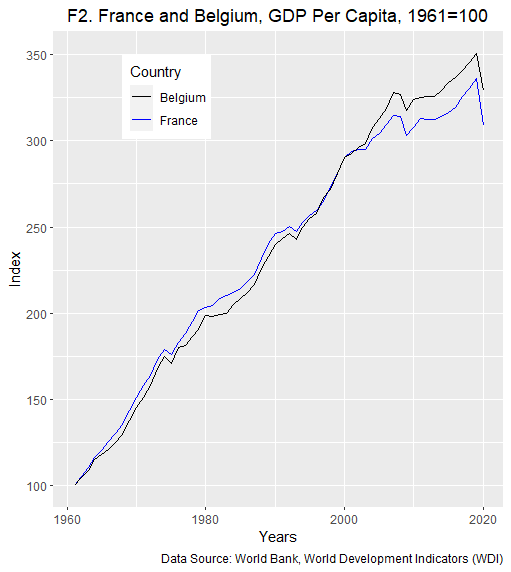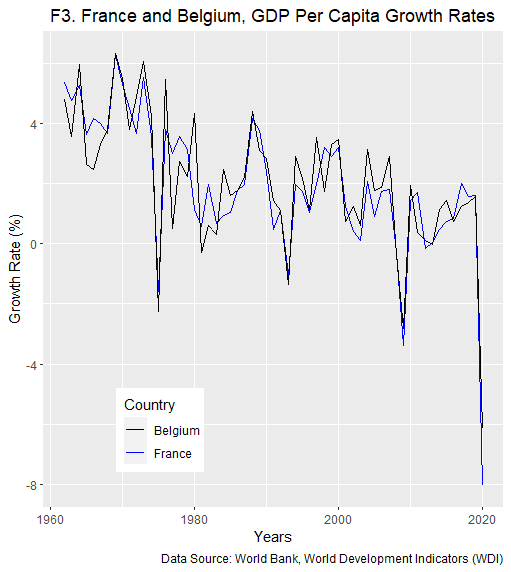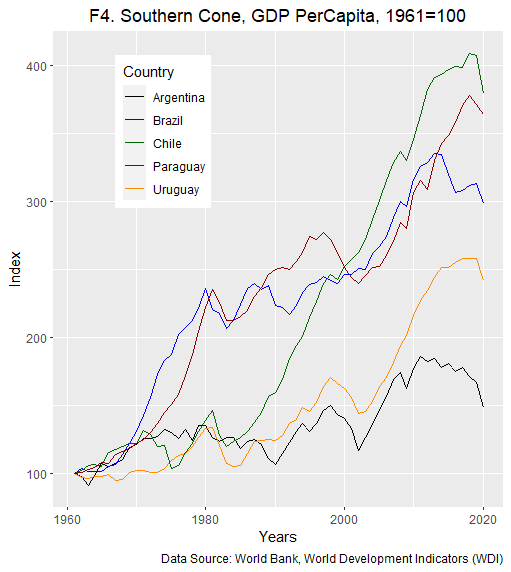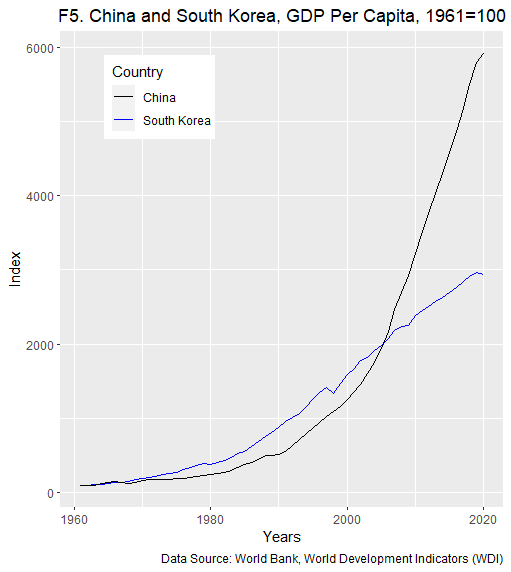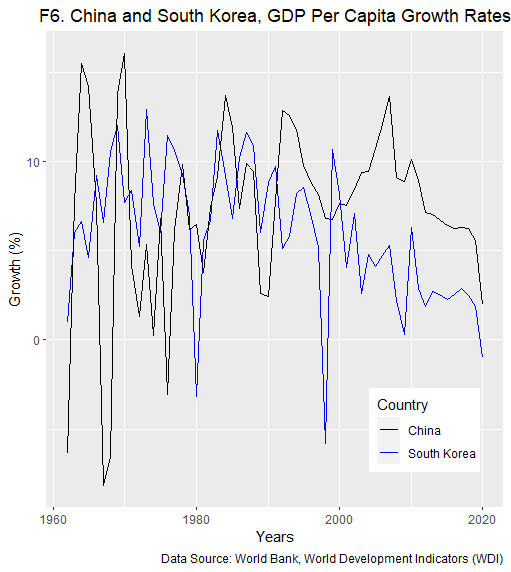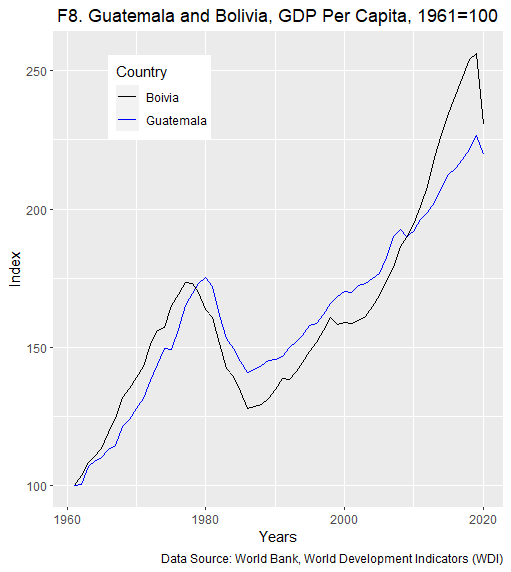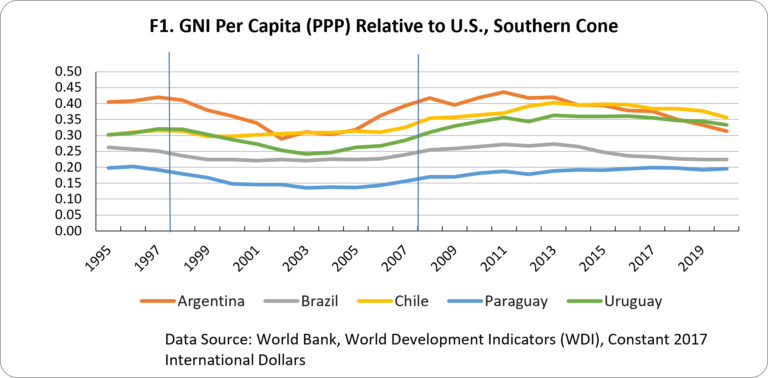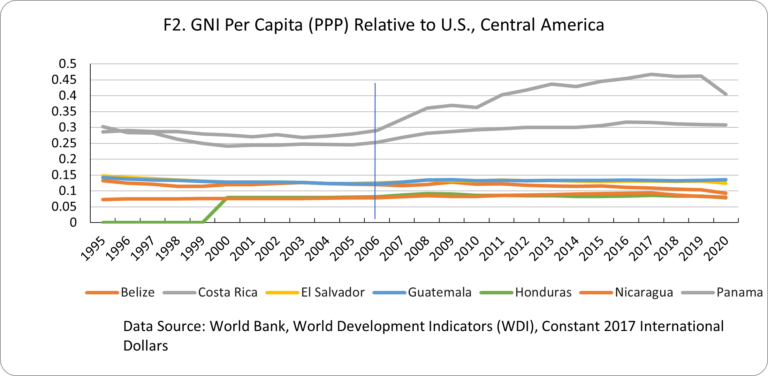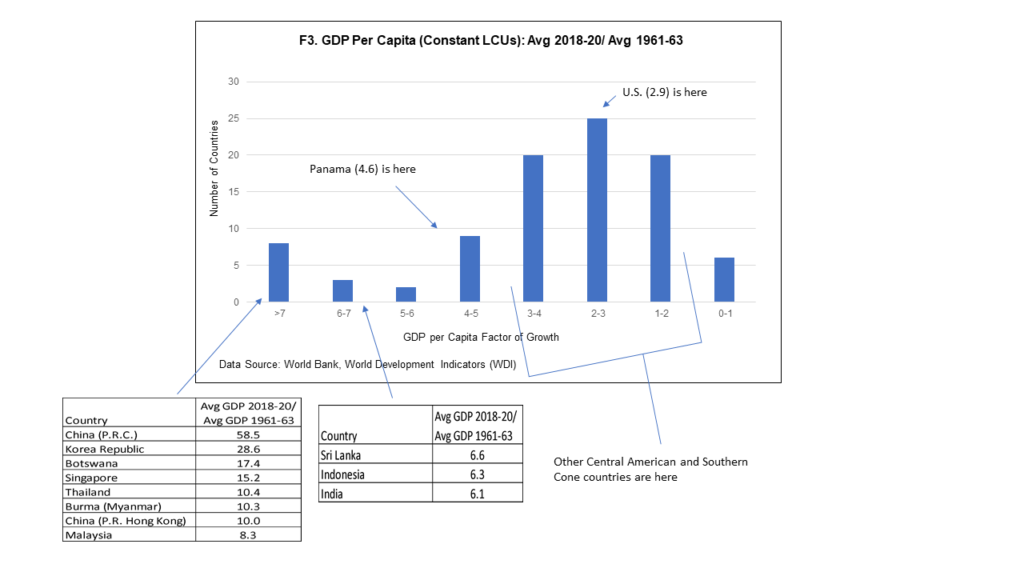Output and Income Indicators
- Post author:Alex Uriarte
- Post published:June 9, 2024
- Post category:Fan

In my previous Fan post (“Indicators of Government Expenditures”) I noted that, when using output indicators such as GDP, we should keep in mind that: a) there are important limitations to this indicator, and b) when used, there are different indicators that may be more or less appropriate for different purposes. I develop a bit on those two points here.
On the first point, an assessment was done in 2008 by a commission led by three economists, two of which Nobel prize awardees, at the request of the Government of France, and later summarized in a book. I draw from it here, although additional details are available online.1
The commission was led by Joseph Stiglitz, Amartya Sen (both Nobel Laureates), and Jean-Paul Fitoussi. Other economists were also part of the commission. The commission was divided in three working groups:
- One to focus on standard issues of national accounting, such as measuring government output and treatment of household production;
- A second group focused on the relationship between output measures and efforts to measure well-being or quality of life;
- A third group looked at attempts to capture sustainability in measures of output.
On the “classical GDP Issues,” GDP mainly measures market production, and one reason why money measures have come to play an important role in our evaluation of economic performance is that money valuations facilitate aggregation. However:
- Prices do not exist for some types of output (e.g. government services provided free of charge or household services such as child care);
- Market prices may not reflect consumer’s appreciation of goods and services if there is imperfect information (e.g. financial products, telecommunications bundles);
- Market prices may not fully reflect societal evaluation due to externalities (e.g. environmental costs);
- Collecting accurate data may be challenging when there are sales or differences in prices among alternative selling mechanisms (e.g. online vs store prices);
- Accounting for quality of products and changes in quality is challenging and may not always be reflected in prices;
- Underestimating quality improvement means overestimating inflation, which, in turn, means underestimating real income.
These are not minor inconveniences, but real issues, and the extent to which GDP measures are distorted by them is not clear. They discuss in some length the issues with measuring services, for example. Services account for up to two thirds of output and measuring the quality of services is challenging. Measuring government provision of services, for example, is often done through inputs, which leave aside the possibility of capturing changes in productivity. Attempts to measure government services using outputs face known challenges, such as accounting for quality. What services are considered final and what intermediate (or “defensive”) services is difficult to define. E.g.: government costs with prisons? Private costs with commuting?
The authors suggest five ways of dealing with some of the deficiencies of GDP as an indicator of living standards:
- Emphasize well established indicators other than GDP
- Gross, rather than Net, has the issue of not accounting for the amount of output that is needed to maintain capital goods (depreciation). When technology is changing rapidly, this could be substantial and the difference between Gross and Net can be considerable. Then – consider “Net” (although depreciation is hard to estimate);
- Product, rather than Income, has the issue of not being as good for accounting household consumption and, therefore, associated well-being. The difference is the purchasing power sent to and received from abroad (net income from abroad). Also, changes in the relative prices of exports and imports will affect national income even if domestic product stays the same. Consider “Income;”
- Consider wealth jointly with consumption to capture consumption possibilities over time;
- Bring out the household perspective
- Adjusted disposable income accounts for government taxes and monetary transfers but not for transfers in kind;
- Add information on the distribution of income, consumption and wealth:
- Median is better than average, but depends on survey data and these have known challenges:
- Unit of measurement? Consumption unit?
- Measuring property income?
- International comparability
- Whose bundle of consumption?
- Changes in the provision of services within households or between families to provision by markets creates distortions
- Also, we should be looking at distribution of full income, not just market income, including values such as household income and leisure
- Median is better than average, but depends on survey data and these have known challenges:
- Widen the scope of what is being measured (may require imputation):
- Recommendation is to keep a satellite account because: a) imputed values are not as reliable as observed values; b) non-observed values could end up being a very large share of total output. E.g.:
- Household work, under the authors estimates, could be 30% of currently measured GDP;
- Leisure could be 80%;
- They still recommend it be done for a) completeness; b) the invariance principle – under which the value of a good or services should not depend on the institutional arrangement under which it is provided (e.g. free by state or charged by private sector).
- Recommendation is to keep a satellite account because: a) imputed values are not as reliable as observed values; b) non-observed values could end up being a very large share of total output. E.g.:
The other two areas taken on by the commission working groups are more intuitive to me, even if not easy to address so I only briefly summarize the conclusions of the corresponding working groups:
- On the relationship between output measures and efforts to measure well-being or quality of life, the argument is that these latter concepts cannot be reduced to resources. Efforts to measure well-being and quality of life have either attempted to measure subjective perceptions, tried to assess capabilities that would enable and support human functioning (health, education, security…) or tried to identify how individuals themselves weigh the non-monetary aspects of their well-being. All these attempts face challenges, including how to incorporate inequalities, how to access the linkages between the various dimensions of well-being or quality of life, and how to aggregate them;
- On attempts to capture sustainability in measures of output, there is a large and varied literature that the commission divided in four groups: attempts to establish large dashboards with sets of indicators addressing different aspects of sustainability; attempt to develop composite indices; attempts to develop adjusted GDP indicators; and indicators focusing on overconsumption or overinvestment.
What do I draw from the above? A few initial thoughts:
- When using an indicator of output growth for a selected country or group of countries, I have typically used the World Bank, World Development Indicators (WDI), Gross Domestic Product (GDP) series in Local Currency Units (LCUs). I have used LCUs when looking at growth instead of alternative monetary units, to avoid the influence of short term fluctuations of exchange rates. Attempts to correct for this influence, such as the World Bank’s Atlas measure (more on this below) or the use of Purchase Power Parity (PPP) measures seem unnecessary, given their imperfections and that we are only interested in growth and not in comparing the absolute value of output among countries. This series can be used to break down domestic output in its expenditure components (G+C+I+Ex-Im+changes in inventories), as well as by sector of the economy (agriculture, industry and services)2. It is available for a period of over 60 years for most countries. Based on the input above:
- The use of output rather than income indicators when looking at growth seems reasonable to me and perhaps more relevant: it better reflects the production capacity of a country (rather than its standard of living) and, for most countries, output and income do not tend to diverge much over time (although this may not always be the case and would be interesting to look at the data).
- The fact that GDP indicators do not capture household production means that growth is likely overestimated during periods where agricultural production for own consumption is reduced and production for the market is increased. GDP growth is also likely overestimated during periods of increased entry of women in the labor market, if this also means decreased services within the household. I would need to further research the WB WDI methodology to see the extent to which the WB tries to address this issue in their measurements;
- The extent to which the informal economy is captured also requires further look into the WB WDI indicator methodology. If it does not capture the informal economy well, growth would also be overestimated during periods of formalization.
- I have used The World Bank, World Development Indicators (WDI), Gross National Income (GNI) series in Purchasing Power Parity (PPP) when comparing countries. I have preferred to use at the concept of income (what belongs to the residents of a country) rather than product (what is produced within the boundaries of a country) when comparing countries because it is a better indicator of resources available to the local population. For cross country comparisons, PPP measures (even if imperfect) allow some correction for price and exchange rate distortions regarding how much residents of two compared countries can actually purchase with their income. This series is available for fewer years and countries. Based on the input above:
- Periods of rapid technological transformation – such as the one we are in now – are likely generating considerable distortion in our relative measurements of income by country, given the challenges in addressing quality of products and services. To the extent that we are able to use net indicators (as opposed to gross), accounting for depreciation in such periods is also a more serious challenge and a source of distortion.
- Does our association of value with market prices mean that our association of income per capita with productivity is somewhat distorted? I explain: think of luxury goods, where price is not necessarily associated with quality but where status of a brand plays an important role in product prices. Countries with heavy presence of luxury industries will have their per capita incomes associated with this higher price that is fabricated by the status of their products rather than by the quality of their products. How we understand the productivity of their population would need to be interpreted in this context (Italy, I am thinking of you).
- Do the decaying European houses (that we think of as so charming) mean that European household income tends to be overestimated by the use of gross measurements?
- On the other hand, does the fact that we do not capture the value of leisure underestimate European household income relative to countries like the US?
- The World Bank uses GNI per capita in US dollars converted from local currency through the Atlas method to classify countries in income groups (low income, lower middle income, higher middle income and high income). The Atlas method is based on three year moving averages of exchange rates. They use the Atlas method rather than PPP arguing that “issues concerning methodology, geographic coverage, timeliness, quality and extrapolation techniques have precluded the use of PPP conversion factors for this purpose” (World Bank, undated). This seems to also be the indicator the WB uses for establishing the annual threshold for countries to qualify for International Development Association (IDA) loans. The US Millennium Challenge Corporation (MCC) uses the WB country income groups to select countries that qualify for its assistance (low income and lower middle income). Based on the input above:
- If we underestimate income in low-income economies, given that they often also have larger portions of their economies not captured by GNI measurements (greater presence of subsistence agriculture, household production and services, informality), what does this mean for our categorization of countries in income groups? How distorted are these classifications? Should we be interpreting them as rather “market income” groups? If so, to what extent are our foreign assistance programs directed at increasing “market income,” rather than income as a whole? To what extent are our foreign assistance impact evaluations distorted by not recognizing this distinction?
Notes
- There used to be a site with technical papers at the URL: www.stiglitz-sen-fitoussi.fr . This seems to no longer be available but I found a link to the content here: https://web.archive.org/web/20150622185128/http://www.stiglitz-sen-fitoussi.fr/en/index.htm
- The WB World Development Indicators reports total value added at basic or producer prices and GDP at purchaser prices. That is why their measurements differ. Purchaser prices include taxes and exclude subsidies. For more information, see here: https://datahelpdesk.worldbank.org/knowledgebase/articles/114948-what-is-the-difference-between-total-value-added-a
References
Stiglitz, Joseph A; Sen, Amartya; and Jean-Paul Fitoussi. 2010. Measuring our Lives: Why GDP Doesn’t Add Up. The Report by the Commission on the Measurement of Economic Peformance and Social Progress. The New York Press.
World Bank. Undated. Why use GNI per capita to classify economies into income groupings?. Available: https://datahelpdesk.worldbank.org/knowledgebase/articles/378831-why-use-gni-per-capita-to-classify-economies-into. Accessed: June 08, 2024.



